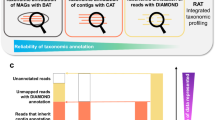Abstract
IT has become generally accepted that the chloragogenous tissue of earthworms is excretory in function and that the granules consist chiefly of guanine. This view is to be found in both elementary and more advanced text-books and is based on the work of Willem and Minne1. Theirs is not the only work, however, and during the first decades of this century a number of papers were published on this problem. The evidence supporting the excretory nature of the chloragogen is conflicting and that for the alternative theory of the elaboration and storage of food reserves is equally contradictory. Many new techniques have been developed since this early work and it seemed desirable to re-investigate the problem using modern methods. Moreover, past work was done on sections and on the whole gut, and no attempt was made to separate the granules.
This is a preview of subscription content, access via your institution
Access options
Subscribe to this journal
Receive 51 print issues and online access
$199.00 per year
only $3.90 per issue
Buy this article
- Purchase on Springer Link
- Instant access to full article PDF
Prices may be subject to local taxes which are calculated during checkout
Similar content being viewed by others
References
Willem, V., and Minne, A., “Livre jub. Ch. van Bambeke” (Bruxelles, 1899); Mem. Acad. Roy. Belg., 58 (1900).
Semal, P., Bull. biol. France et Belge (in the press).
Author information
Authors and Affiliations
Rights and permissions
About this article
Cite this article
ROOTS, B. Nature of Chloragogen Granules. Nature 179, 679–680 (1957). https://doi.org/10.1038/179679b0
Issue Date:
DOI: https://doi.org/10.1038/179679b0
This article is cited by
-
Zinc sequestration by earthworm (Annelida: Oligochaeta) chloragocytes
Histochemistry (1989)
-
The occurrence and localisation of heavy metals and glycogen in the earthwormsLumbricus rubellus andDendrobaena rubida from a heavy metal site
Histochemistry (1977)
-
Zur Ultrastruktur der Blutzellen wirbelloser Tiere
Zeitschrift f�r Zellforschung und Mikroskopische Anatomie (1971)
-
Ferritin und H�moglobin im Chloragog von Lumbriciden (Oligochaeta)
Zeitschrift f�r Zellforschung und Mikroskopische Anatomie (1965)
-
Die endogene Atmung der isolierten Organe beim Regenwurm Lumbricus terrestris L.
Zeitschrift f�r Vergleichende Physiologie (1964)
Comments
By submitting a comment you agree to abide by our Terms and Community Guidelines. If you find something abusive or that does not comply with our terms or guidelines please flag it as inappropriate.



